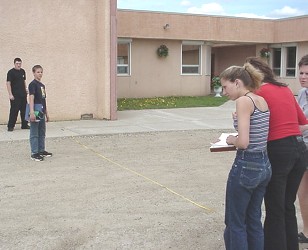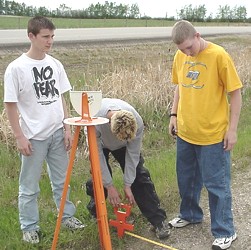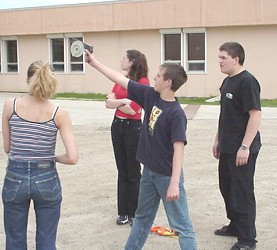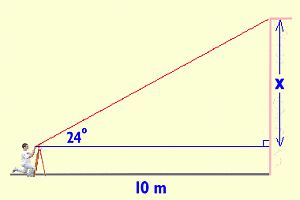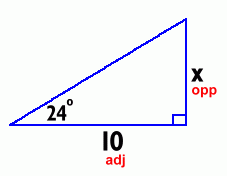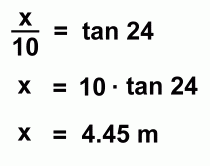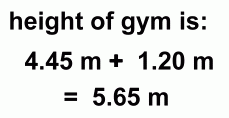The next step is to measure the angle of inclination to the top of the wall. This can be done using a device called a clinometer. We used several different types. A blackboard protractor, thumbtack, string and weight can be used to make a simple one if you don't have a real clinometer. We did the angle measurement several times, and found an average value of 24 degrees.
Sr, High Science How close was our answer? Well, the precision of our measurements could have affected the result. Let's have a look at how precise our values were, and find out what sort of effect this might have had on the calculated result. The clinometer's scale is labelled in single degrees. Ideally, we should be able to measure an angle accurately to within half a degree. However, the sights on the clinometer are not very good, and there is no telescope to pinpoint the aiming spot 'exactly'. As a result, our angle measurement could have been off by as much as perhaps two degrees. The measuring tape was more precise, but we didn't make much of an effort to pull it tight. We could have been off on our distance measurement by perhaps as much as 20 cm, or 0.2 m Lets see what effect this error could have on our answer. 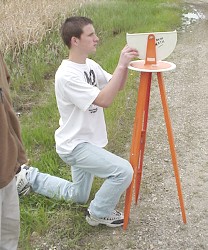 Our original measurements were 10m and 24°.
Our original measurements were 10m and 24°.If our measurements were both too big by 0.2m in distance, and 2 degrees of angle, the values might actually have been 10.2m and 26°. This would make x = 10.2 · tan26 = 4.97m, and the height of the gym 6.17m (We will assume, for simplicity, that the error in measuring the height 1.20m of the instrument was negligible) If our measurements were both too small by 0.2m in distance, and 2 degrees of angle, the values might actually have been 9.8m and 22°. This would make x = 9.8 · tan22 = 3.96m, and the height of the gym 5.16m So we can say that, while we originally calculated the height of the gym to be 5.65 m, its probable height, allowing for errors in measurement, is more likely somewhere between 5.16m and 6.17m. |
